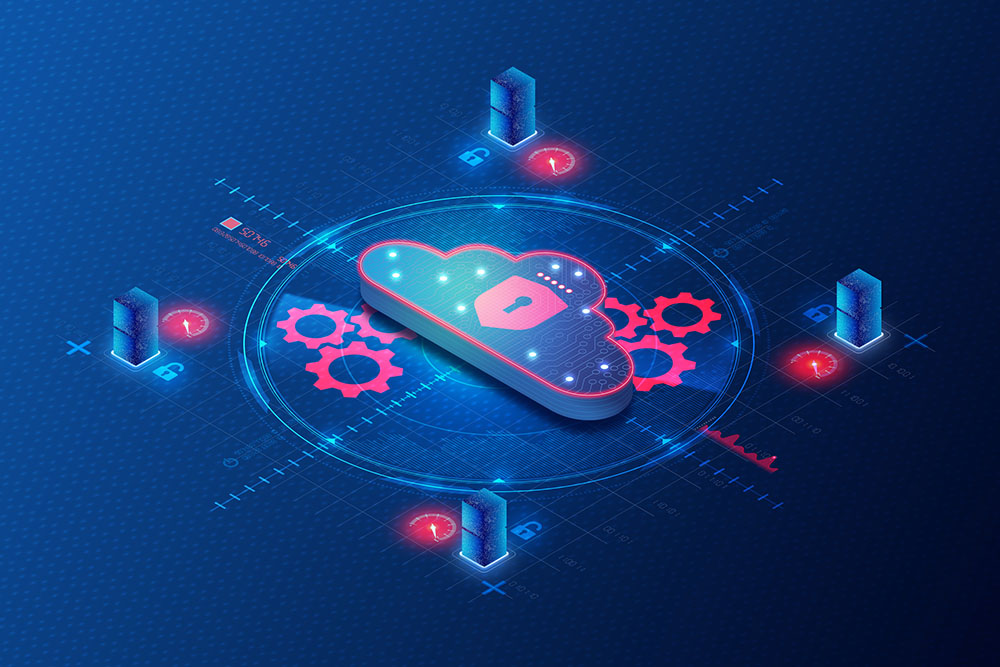Infrastructure as a service (IaaS) is one of the world’s fastest-growing areas of cloud computing. In 2023, it continues to offer businesses key solutions such as network infrastructure, data storage (online) and virtualisation. Below, our investment team at Bure Valley Group shares some latest developments in the IaaS market for investors. We include an overview of the market at present, key players, trends and growth drivers, rising stars, opportunities and threats to consider as you build your portfolio.
IaaS in 2023: Market Overview
The IaaS market was valued at $51.3 billion in 2020 and is projected to reach $481.8 billion by 2030, representing a compound annual growth rate (CAGR) of 25.3%. Much of the growth in this initial period was driven by the COVID-19 pandemic, with businesses forced to relocate operations online due to remote working, social distancing and quarantine. In the four months following lockdown in March 2020, for instance, 85,000 businesses launched online stores in the UK. A key attraction of Iaas is that businesses can rent servers in the cloud for compute and storage, according to their needs. This reduces or eliminates the need to invest in expensive hardware on-site, resulting in lower capital expenditures, reduced IT maintenance costs and improved resource utilisation. The global IaaS market can be segmented in multiple ways including by component (e.g. storage), by deployment (e.g. public/private), by industry (e.g. healthcare) and by geography. For instance, over 40% of the global Iaas market comprises storage, when analysed by component.
Major Players & Key Trends
The biggest global IaaS companies are still the usual suspects: Amazon Web Services (AWS), Microsoft Azure, IBM, Google, Cisco System Inc., Oracle Corporation and Alibaba. Whilst North America was the largest IaaS market in 2022, other important jurisdictions include Australia, Brazil, China, France, Germany, India, Indonesia, Japan, Russia, South Korea and the UK. Whilst COVID-19 certainly acted as a tailwind for IaaS in 2020, evidence suggests that the effect is wearing off. In early 2022, for instance, only 10% of UK small businesses had moved online despite the push to move online. A major obstacle has been a lack of skills and confidence, whilst some business owners resisted due to the belief that the pandemic would eventually end. Yet other market forces have also acted as a headwind.
The Ukraine-Russian War has disrupted the potential global recovery from COVID-19 in 2023, at least for now. The resulting sanctions, rising energy prices and supply chain issues have contributed to high inflation in many countries, with knock-on effects on several industries – including IaaS. Big Tech companies are facing increasing pressure from cost-conscious customers (particularly enterprises), many of whom are “getting smarter” about squeezing costs out of their cloud spending. Amazon and Microsoft both experienced a surprising drop in cloud growth in Q4 of 2022. Yet this headwind also presents an opportunity for rising stars in IaaS, some of which are using blockchain technology to offer cheaper solutions to customers.
Rising Stars & the Road Ahead
Airbnb profits from unused living space in members’ properties. Uber does the same with passenger vehicles and StashBee allows people to rent out their unused parking space. In the IaaS space, innovative companies are taking a similar approach to cloud storage. NexGen Cloud is a case in point, enabling members to “rent out” their unused computing power (e.g. on laptops and other GPU-powered devices) to others on the network. Since the business is not investing in multiple large data centres (and teams to manage them), but rather leveraging existing GPU assets around the world, NexGen can offer prices up to 5x cheaper than AWS, Google and Microsoft – giving a strong, competitive advantage.
This approach fits in nicely with an existing global trend towards GPU-powered cloud storage. According to one report, the global GPU as a Service (GPUaaS) market is expected to surpass USD 15 billion by 2027, growing at a CAGR of over 40% from 2021 to 2027. Whilst CPUs remain dominant (powering the Big Tech data centres) and are significantly faster and more powerful on their own, GPU cores vastly outnumber them and greatly surpass their ability to process tasks in parallel. This trend also mirrors a global move towards blockchain technology, which powers NexGen’s business model. Increasingly, users want their data to be stored in a decentralised manner – making it harder for hackers to attack, reducing single loss risk and lowering the impact of outages. Indeed, in January 2023 Microsoft’s Azure platform went down, hitting users in the Americas, Europe, Asia Pacific, Middle East and Africa. Blockchain data storage, by contrast, offers much more reliability.
There are investment risks to consider with IaaS, however. There is still a lack of standardisation, making it difficult for organisations to compare different IaaS solutions and pick the most suitable one for their needs. Security concerns are still high in many customers’ minds, with misconfiguration, vulnerabilities and shadow-IT (e.g. ghost virtual servers) plaguing the space. Here, blockchain-power IaaS solutions have a lot to offer.
Conclusion
If you are interested in expanding your portfolio into these kinds of exciting spheres of investing, then we invite you to get in touch with us here at Bure Valley and to consider joining our exclusive investor network:
+44 160 334 0827


